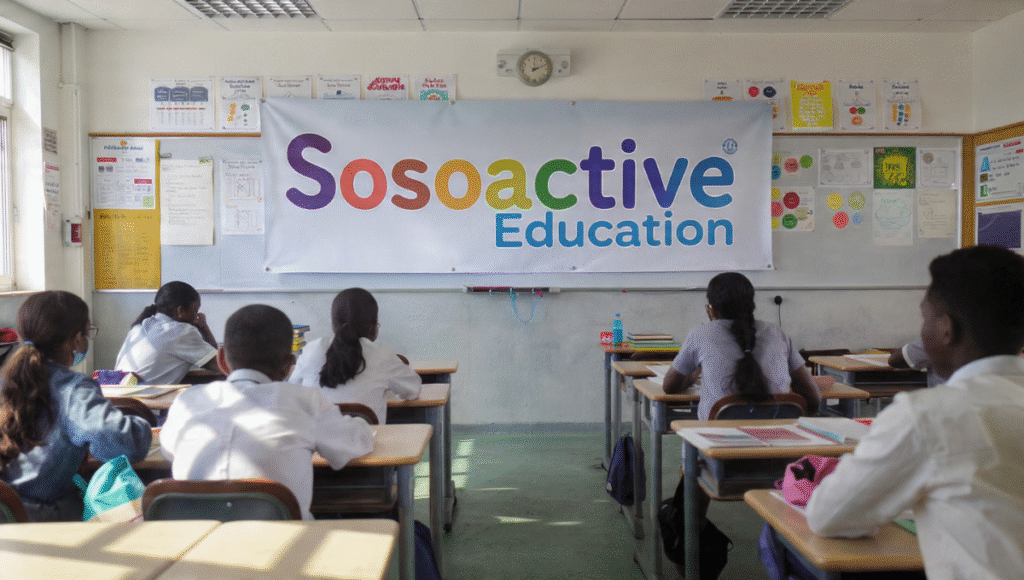In today’s fast-evolving educational landscape, traditional teaching methods are increasingly being replaced by approaches that focus on the student as the center of the learning process. One such innovative approach gaining attention is Sosoactive Education. This method emphasizes active participation, personalized learning, and critical thinking, empowering students to take ownership of their educational journey.
This article explores what Sosoactive Education is, its key benefits, and why student-centered learning is reshaping modern education.
What Is Sosoactive Education?
Sosoactive Education is an educational philosophy that prioritizes student engagement, interaction, and practical learning over passive instruction. Unlike conventional methods where the teacher primarily delivers content, Sosoactive Education encourages students to:
-
Participate actively in lessons
-
Collaborate with peers
-
Apply concepts in real-world scenarios
-
Develop problem-solving and critical-thinking skills
This approach transforms classrooms into dynamic spaces where students are co-creators of knowledge rather than passive recipients.
Key Principles of Student-Centered Learning in Sosoactive Education
-
Active Participation
Students are encouraged to ask questions, share ideas, and engage in discussions rather than simply memorizing information. This improves comprehension and retention. -
Personalized Learning
Sosoactive Education recognizes that every student learns differently. Lessons are tailored to individual strengths, interests, and learning paces, allowing for a more customized educational experience. -
Collaborative Environment
Teamwork and peer-to-peer learning are integral. Students work together on projects, presentations, and problem-solving tasks, which fosters communication and leadership skills. -
Critical Thinking and Problem-Solving
Rather than focusing solely on rote memorization, Sosoactive Education encourages students to analyze, evaluate, and apply knowledge in meaningful ways. -
Teacher as a Facilitator
In this model, teachers guide, mentor, and support rather than dominate the classroom. They help students explore topics, set goals, and reflect on their learning journey.
Benefits of Sosoactive Education
Implementing Sosoactive Education and student-centered learning comes with numerous advantages:
1. Improved Engagement
Students are more invested in lessons when they actively participate, which leads to higher motivation and interest in learning.
2. Enhanced Retention
Active involvement helps students remember concepts longer because they are applying knowledge in interactive ways rather than just listening passively.
3. Development of Soft Skills
Collaboration, communication, leadership, and problem-solving skills are naturally fostered in student-centered environments.
4. Greater Independence
Students learn to take responsibility for their learning, set goals, and self-assess, cultivating independence and confidence.
5. Adaptability for Real-World Challenges
By emphasizing practical application and critical thinking, Sosoactive Education prepares students for real-world scenarios beyond the classroom.
How Schools Can Implement Sosoactive Education
Transitioning to a student-centered approach requires thoughtful planning. Some effective strategies include:
-
Integrating project-based learning and hands-on activities
-
Encouraging group discussions and collaborative assignments
-
Providing options for personalized learning pathways
-
Using technology to enhance interactive learning experiences
-
Training teachers to act as facilitators and mentors
Even small changes in teaching strategies can gradually shift a classroom from teacher-led to student-centered.
Challenges to Consider
While Sosoactive Education offers many benefits, it also comes with challenges:
-
Requires well-trained and adaptable teachers
-
Demands smaller class sizes for effective interaction
-
Needs additional resources for personalized learning
-
May take time for students and teachers to adjust
Despite these challenges, schools that adopt student-centered approaches often see long-term gains in student performance, motivation, and satisfaction.
Conclusion
Sosoactive Education: A Look at Student-Centered Learning illustrates how modern educational approaches are evolving to place students at the heart of the learning process. By focusing on active participation, collaboration, critical thinking, and personalized learning, this method not only enhances academic outcomes but also prepares students for future challenges.
In a world where adaptability and innovation are essential, Sosoactive Education provides a practical and inspiring framework to make learning engaging, meaningful, and transformative.

